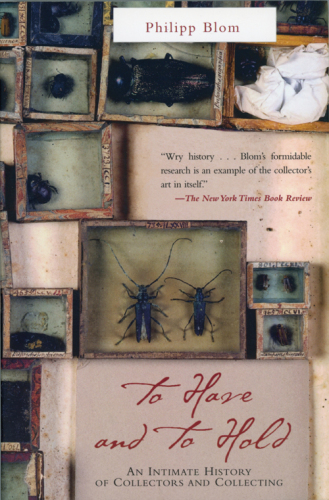
To Have and to Hold
کتاب های مرتبط
- اطلاعات
- نقد و بررسی
- دیدگاه کاربران
نقد و بررسی

December 2, 2002
The mania of collecting, a pastime usually reserved for the most wealthy of individuals, has a long history, says German-born journalist Blom. For many collectors, "money is no object, and objects are everything." Blom begins his formal, idiosyncratic chronicle in the 16th century, when the Renaissance-fueled explosion of scientific inquiry led to a boom in what the Dutch referred to as cabinets of curiosities. Typically stocked with small antiques and remains of strange animals and men (fake and real), they were popular among the rich and bourgeois across Europe through the next few centuries. Blom follows the tradition into the dark castles of crazed aristocrats and obsessed collectors (such as the 18th-century German doctor who had a collection of skulls taken from the local gallows and asylum) who thought to compile small, neurotically labeled and catalogued worlds, which countered the chaotic one outside their walls. Although Blom's book sticks mainly to highbrow collecting—e.g., old master drawings, snuffboxes, architectural models, human skulls, books—and does not come to any conclusions on what drives people to collect, it is an admirable attempt to chart the history of an obsession. 53 b&w illus. and photos. Agent, A.M. Heath. (Mar.)FYI:Allen Lane published the book in the U.K. this past July.

March 15, 2003
In his first book, Blom provides an insightful look into cultural worldviews as revealed by collections and discusses the reasons-both clinical and personal-why people collect things. Whether designed to widen ideas of the world or to categorize every piece of information in an already established schema, collections can reveal a great deal about their collectors. Blom expands on these revelations with fascinating stories of the idiosyncratic collectors who helped shape knowledge and history by gathering rhinoceros horns, seashells, body parts, art objects, and a range of other natural and humanmade trinkets. He also theorizes that the frenzied single-mindedness collectors sometimes display may have connections to high-functioning autistic behaviors. While this conclusion is bound to be unpopular with collectors, Blom offers some compelling arguments. His occasional personal forays into the subject are less successful, but despite this and the occasionally clunky prose, the book is a worthy purchase. The extensive, judicious use of primary sources and well-chosen black-and-white illustrations increase the effectiveness of this title, which is recommended for any public or academic library.-Audrey Snowden, GSLIS (student), Simmons Coll., Boston
Copyright 2003 Library Journal, LLC Used with permission.

January 1, 2003
It does take one to known one. Journalist Blom waxes lyrical about the art and craft of collecting--and the results of collectors' labors. His own interest started with his grandfather's "The Yellow Finch" shop in Amsterdam, and here he relates stories of some of the oddest hobbies-of-passion known to history. Prince Rudolf of Habsburg, later Holy Roman Emperor, amassed amazing things of nature--a musk pouch, Seychelles nut, a bezoar (a poison antidote), among other "miracles," housed in a huge rococo chest. Czar Peter the Great was obsessed with dwarfs and freaks, so much so that he bought the entire collection of a Dutch doctor and moved it to St. Petersburg. Then, the business moguls, including J. Pierpont Morgan and William Randolph Hearst, had their arts and oddities, too. Throughout these well-documented stories, Blom probes the heart and soul of collecting's appeal, whether it be for the beauty of the superficial (a book's hand-wrought leather binding, for example) or the beauty of the content inside. An intellectual journey worth taking.(Reprinted with permission of Booklist, copyright 2003, American Library Association.)

























دیدگاه کاربران